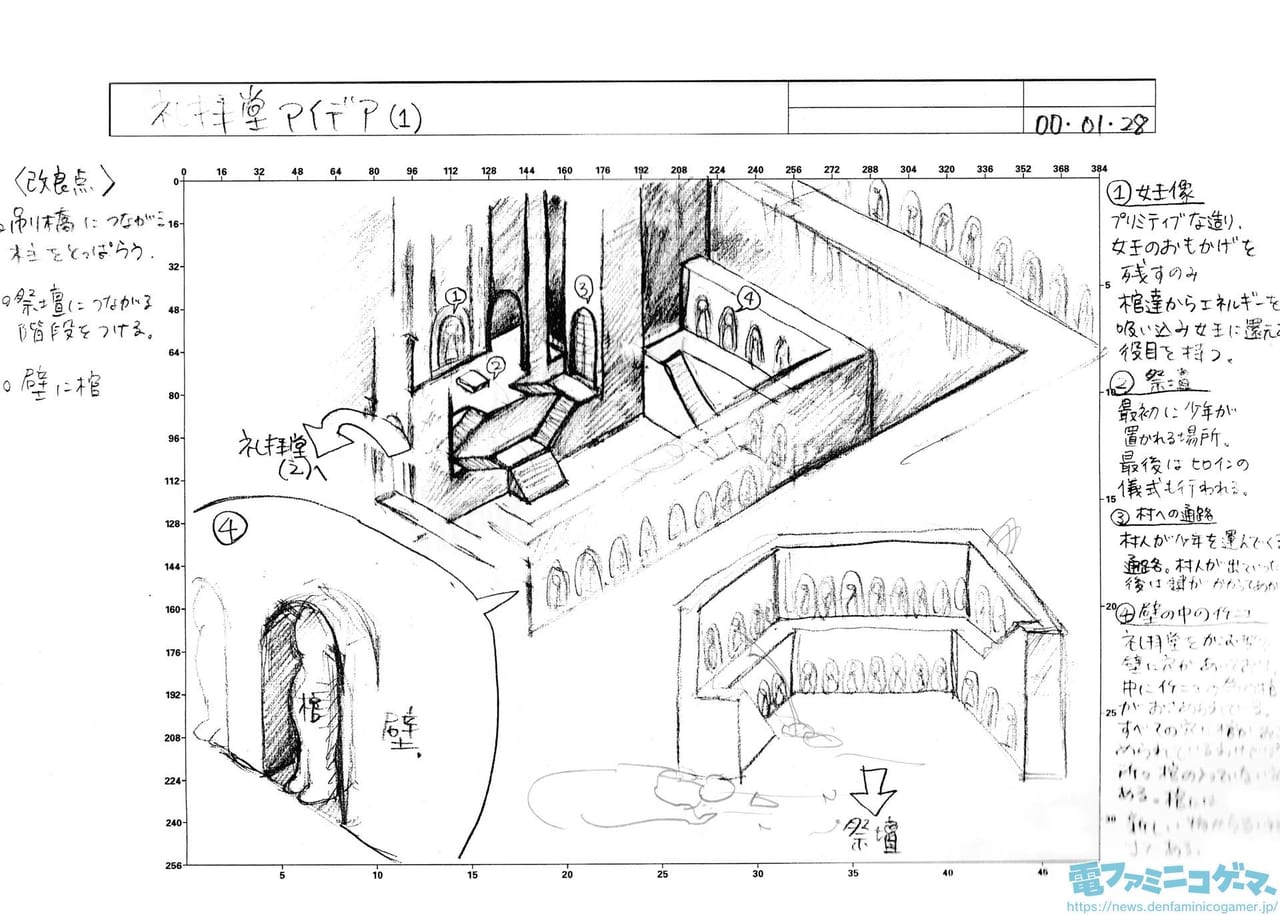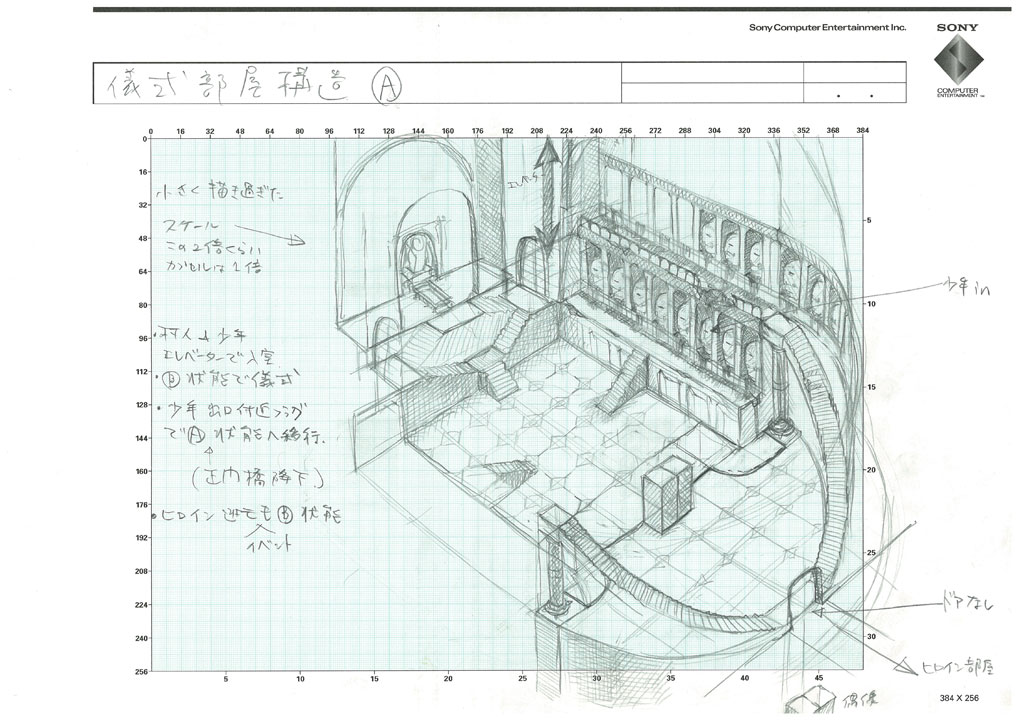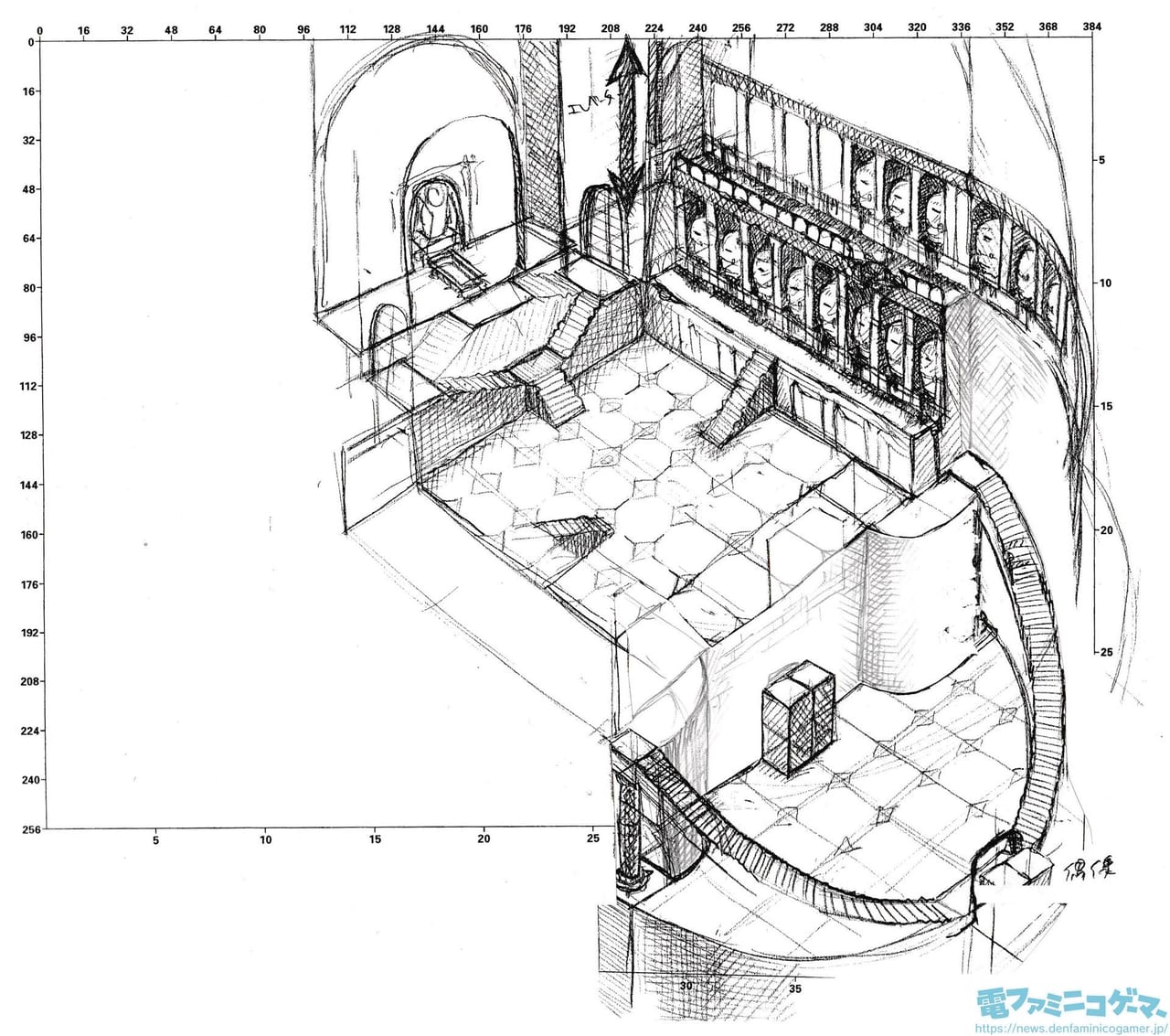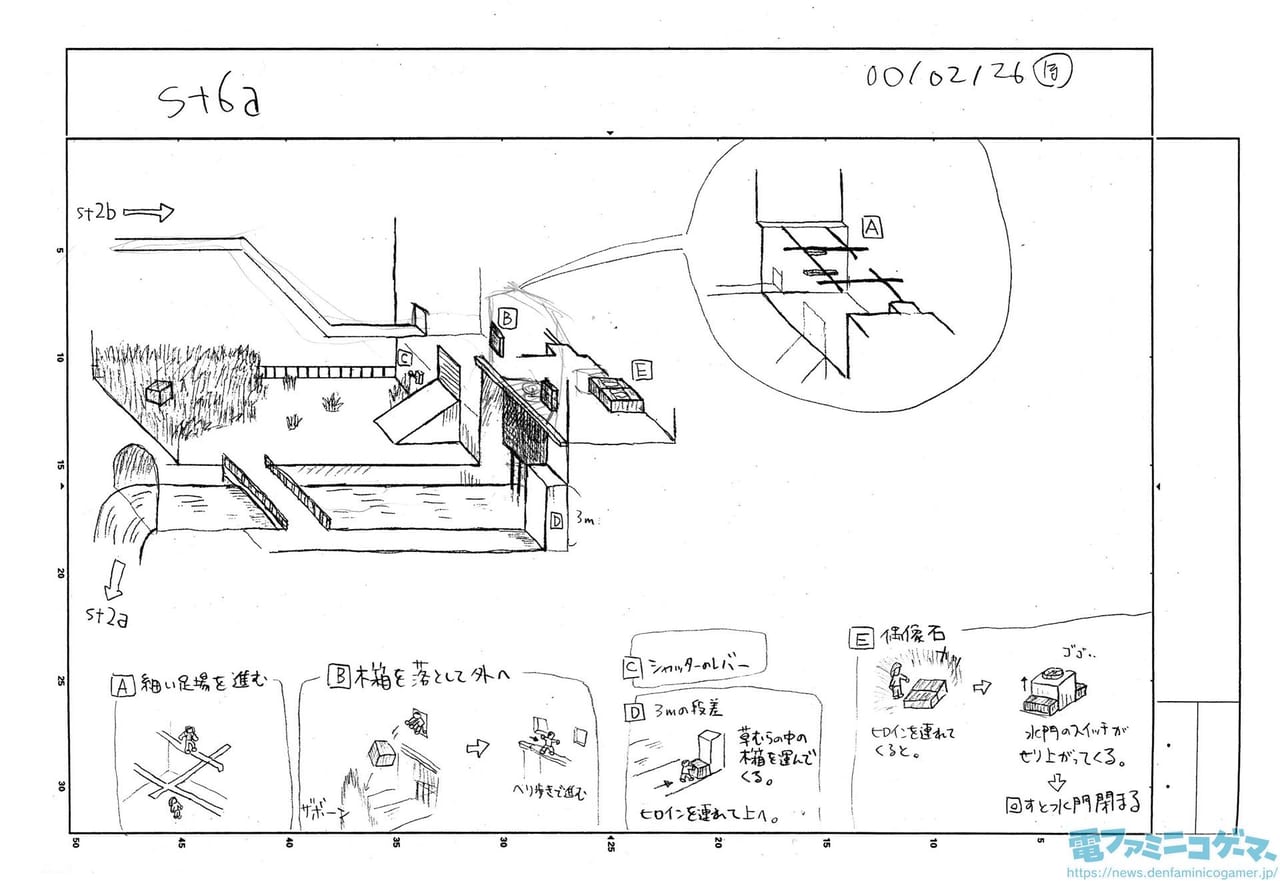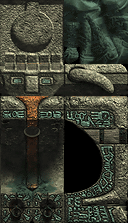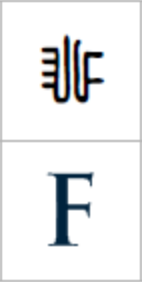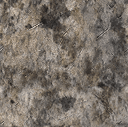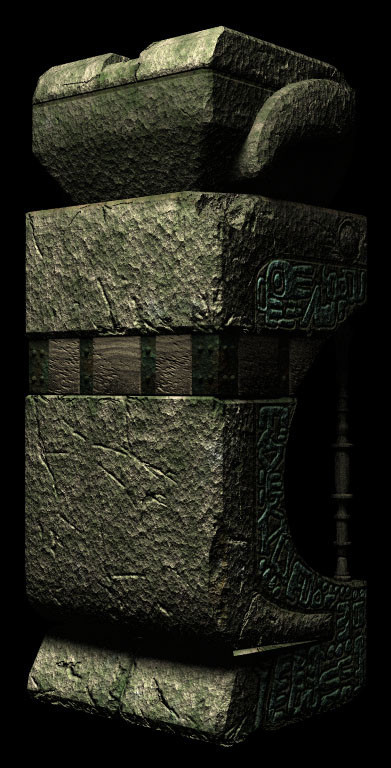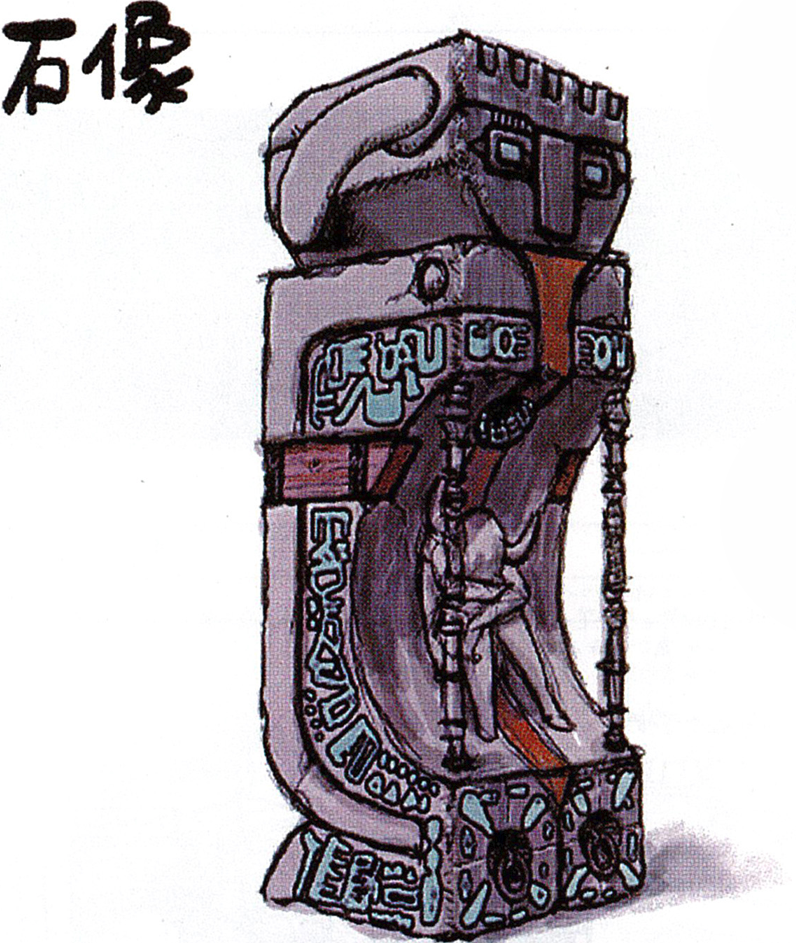Locations
Altar IWarehouse
Spiral Staircase
Old Bridge
Stairs
Trolley
Chandelier
Drawbridge
Main Gate
Graveyard
Dark Room
Windmill
Sunbeams
Stone Pillar
East Crag
East Arena
East Idol Stairs
East Reflector
Waterfall
Sluice
Cogwheel I
Gondola
Water Tower
West Crag
West Arena
West Idol Stairs
West Reflector
Cage
Cogwheel II
Pipe
Elevator
Wharf
Altar II
Queen's Room
Sandy Beach
Design/Concepts
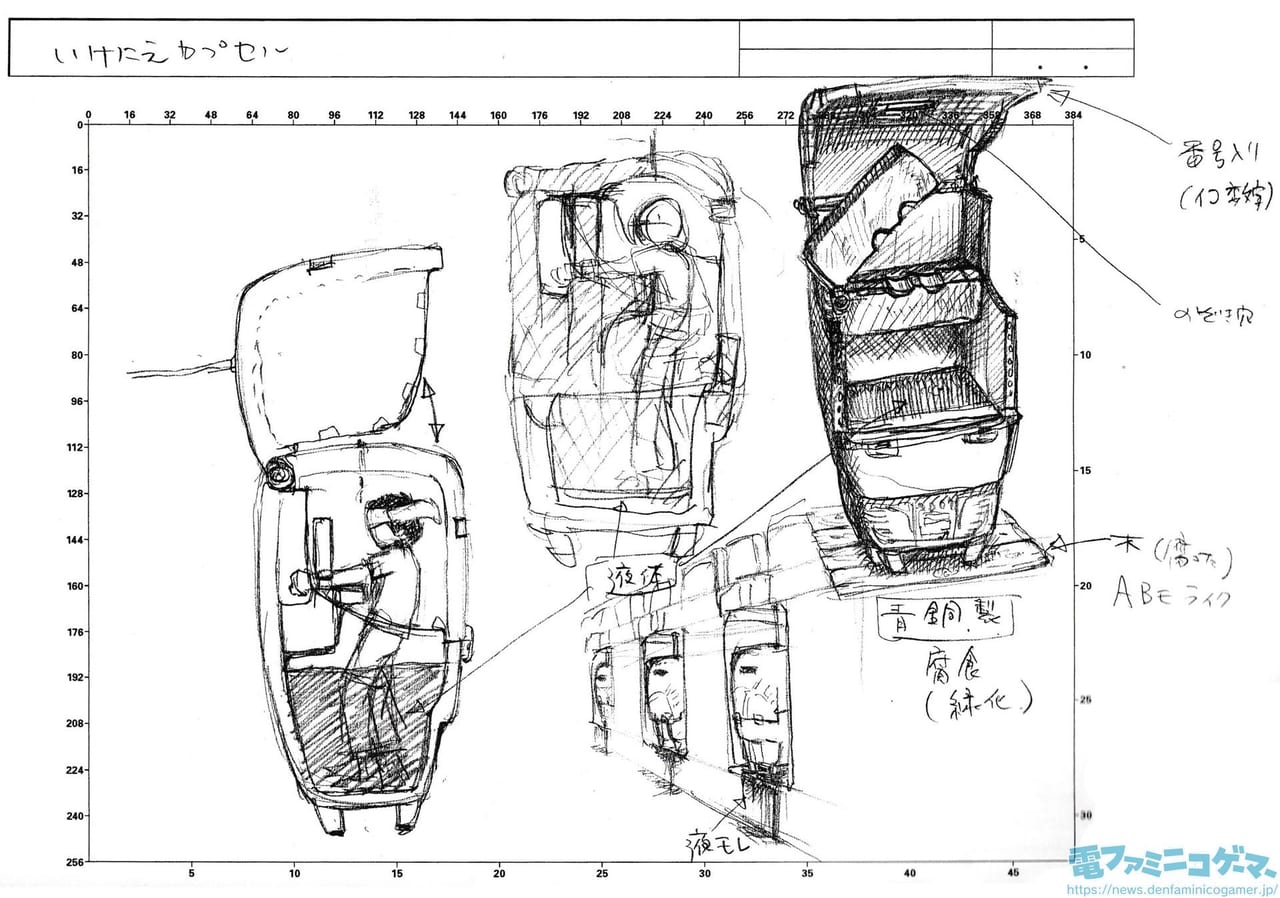 [Full Size]
[Full Size][Source]
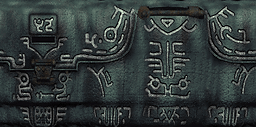 [Full Size]
[Full Size]'cap' Texture
(Likely short for 'capsule'.)
 [Full Size]
[Full Size]The background artist responsible for the capsule design laid out the e-koʊ numeral concept with this diagram. Only '2' and '5' are present on the chart as the others have been forgotten overtime. Additionally, the picture shows how one can count the capsules to land on e-koʊs as the 25th.
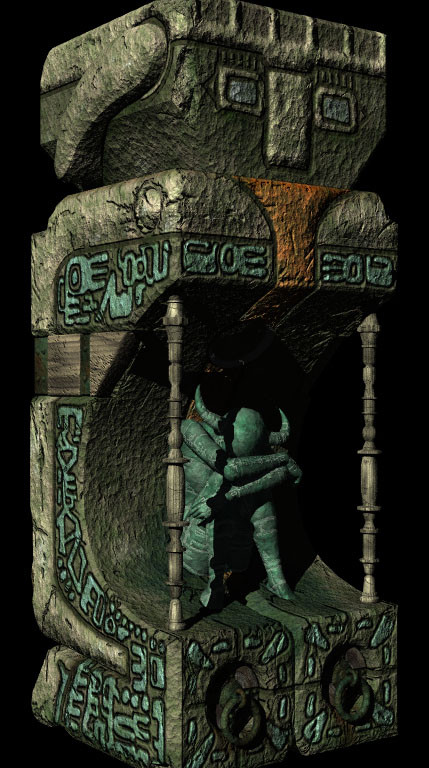 [Full Size]
[Full Size]Images of the original LightWave 3D model for the Idol Gates (internally referred to as 'sekizou' or 'stone statues') have been graciously provided by Kazuhiro Numata.
During development, Team ICO would actually model and texture all props and maps in a high-quality animation program before greatly reducing their visual and geometric complexity.
Many of the original models were unfortunately not preserved by Sony. But various former team members held onto them, allowing for some impressive texture upgrades in the PS3 remaster.
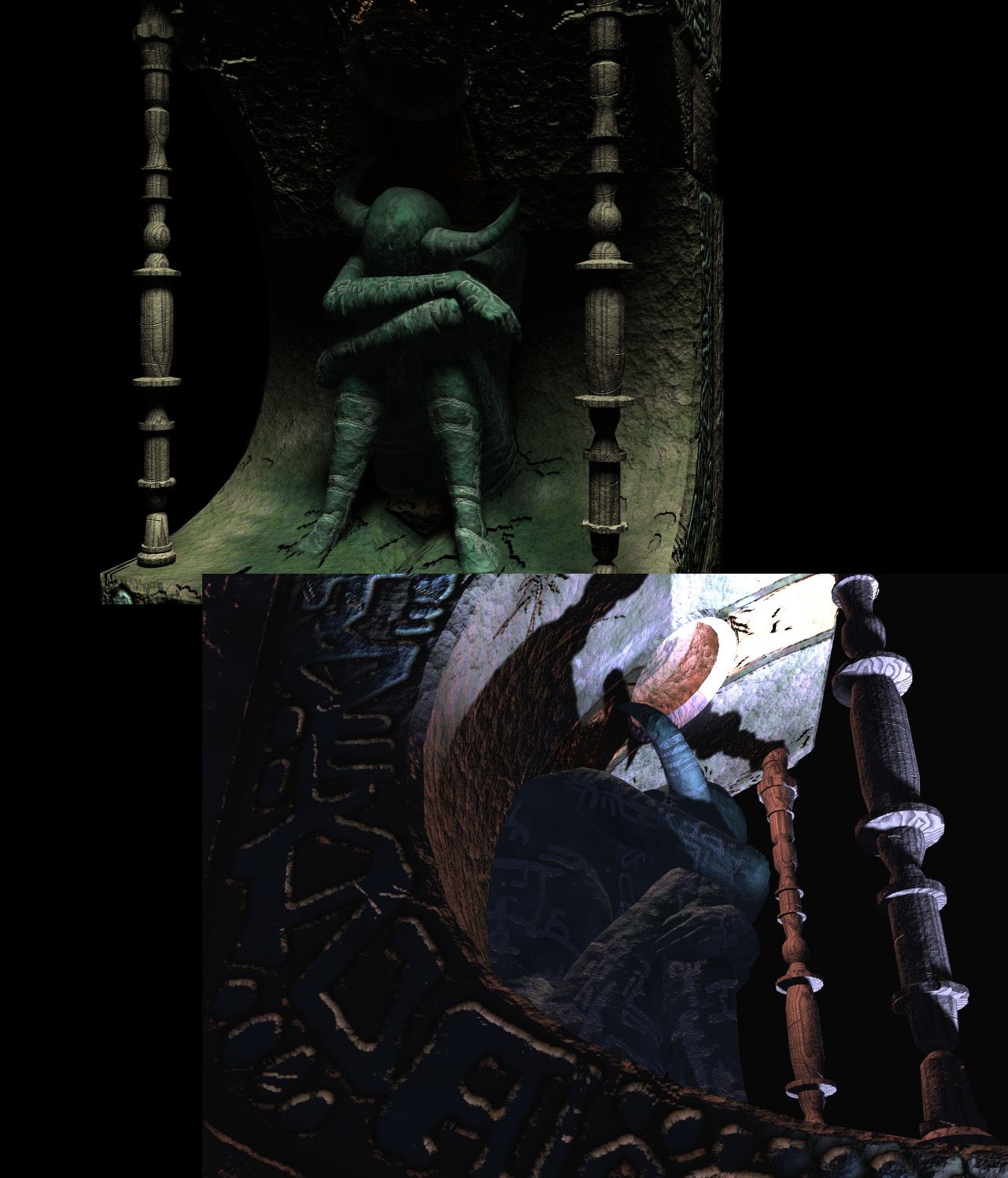 [Full Size]
[Full Size] [Full Size]
[Full Size]This is an edit to overlay the two textures, so you can better see where the glow is applied to the statue.
 [Full Size]
[Full Size]'metal_blue' Texture
(Likely a transliteration of '青銅', the word for bronze in Japanese, which comprises the kanji for 'blue/green' and 'copper'.)
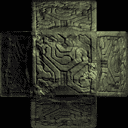 [Full Size]
[Full Size]'l_monyou' Texture
('monyou' as in '文様', which is an artificially made pattern or design.)
 [Full Size]
[Full Size]'sekizo_ato' Texture
('sekizo' as in '石像' meaning 'stone statue' and 'ato' as in '跡' meaning 'trace'.)
 [Full Size]
[Full Size]'taru' Texture
(Likely as in '樽', meaning cask or barrel.)
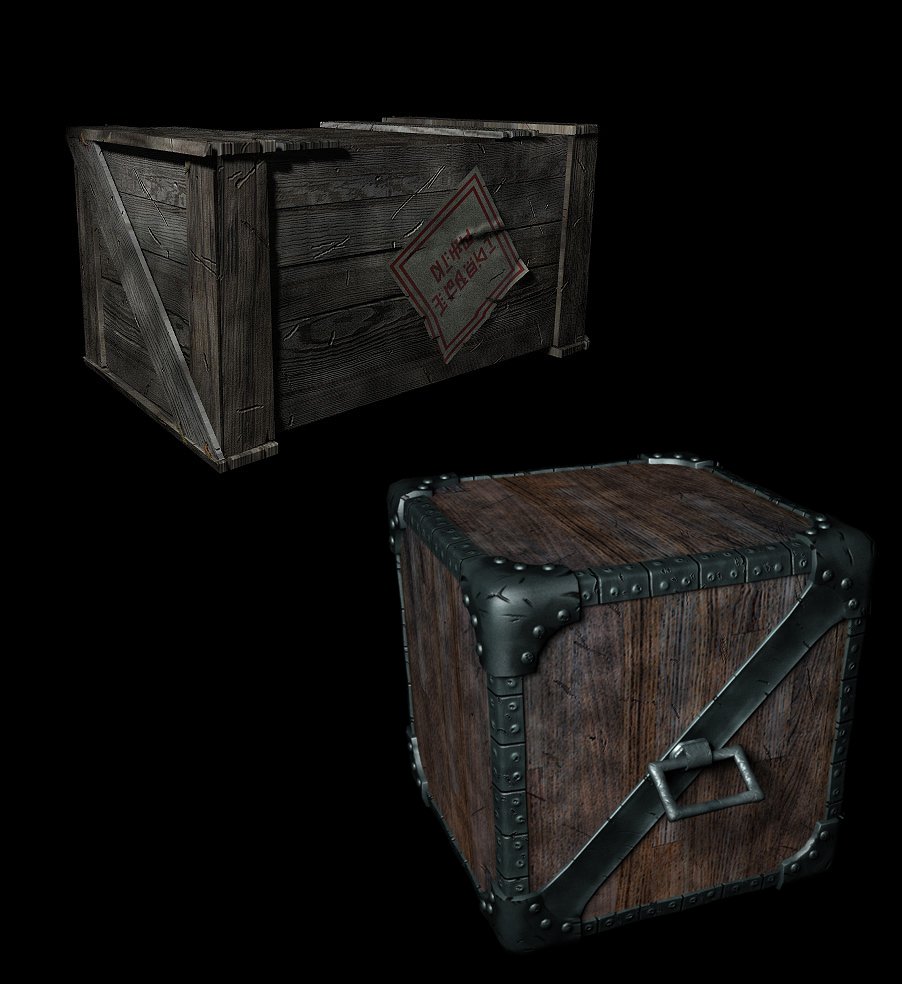 [Full Size]
[Full Size]The crate seen here in the top-left corner is the origin of the label displayed on the sides of the small barrels.
It appears to have been flipped up-side down in application (assuming the LightWave3D model is displaying it right-side up).
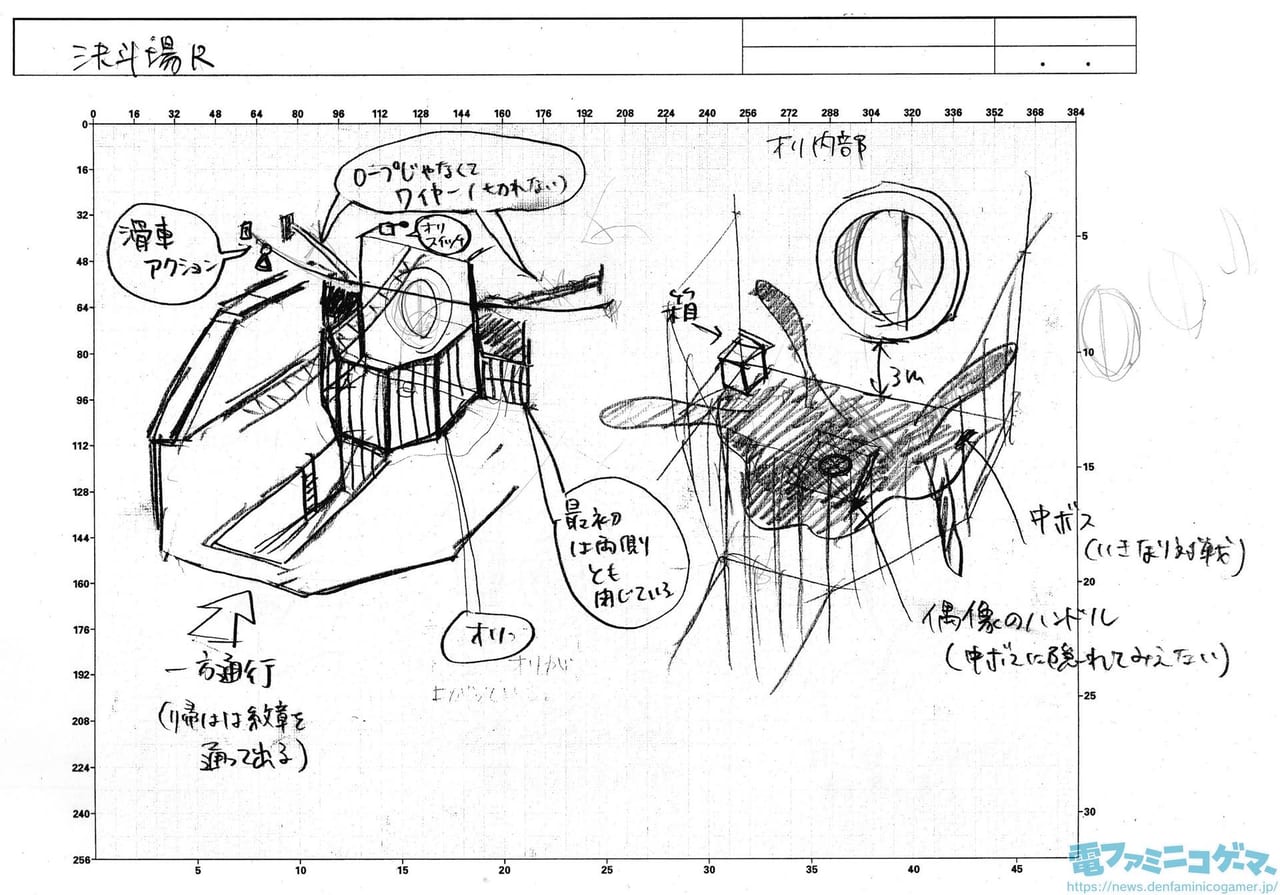 [Full Size][Source]
[Full Size][Source]Of Note:
一方通行
(り帰はは紋章を
通って出る)
Translation: One-way entrance (Exit by returning through the crest)
This, taken alongside the fact that the Arena maps were internally referred to as "Crest_L" and "Crest_R", implies the apertures are a form of heraldry.
Interesting then, that they bear the same 'monyou' pattern seen on the sofas.
 [Full Size][Source]
[Full Size][Source]Note the low end of the diagram where it has a box labelled '8a'. st08a is this map's internal file name. So the curving shape leading out from it would likely be the trolley track.
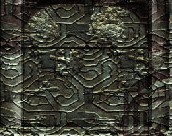 [Full Size]
[Full Size]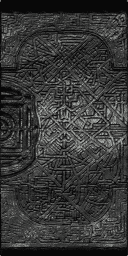

'monyo' Texture
(Likely as in '文様', which is an artificially made pattern or design.)
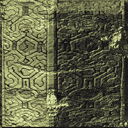 [Full Size]
[Full Size]'g_zou' Texture
(Likely 'g' as in the English word 'gate' and 'zou' as in '像', which can mean image or portrait.)
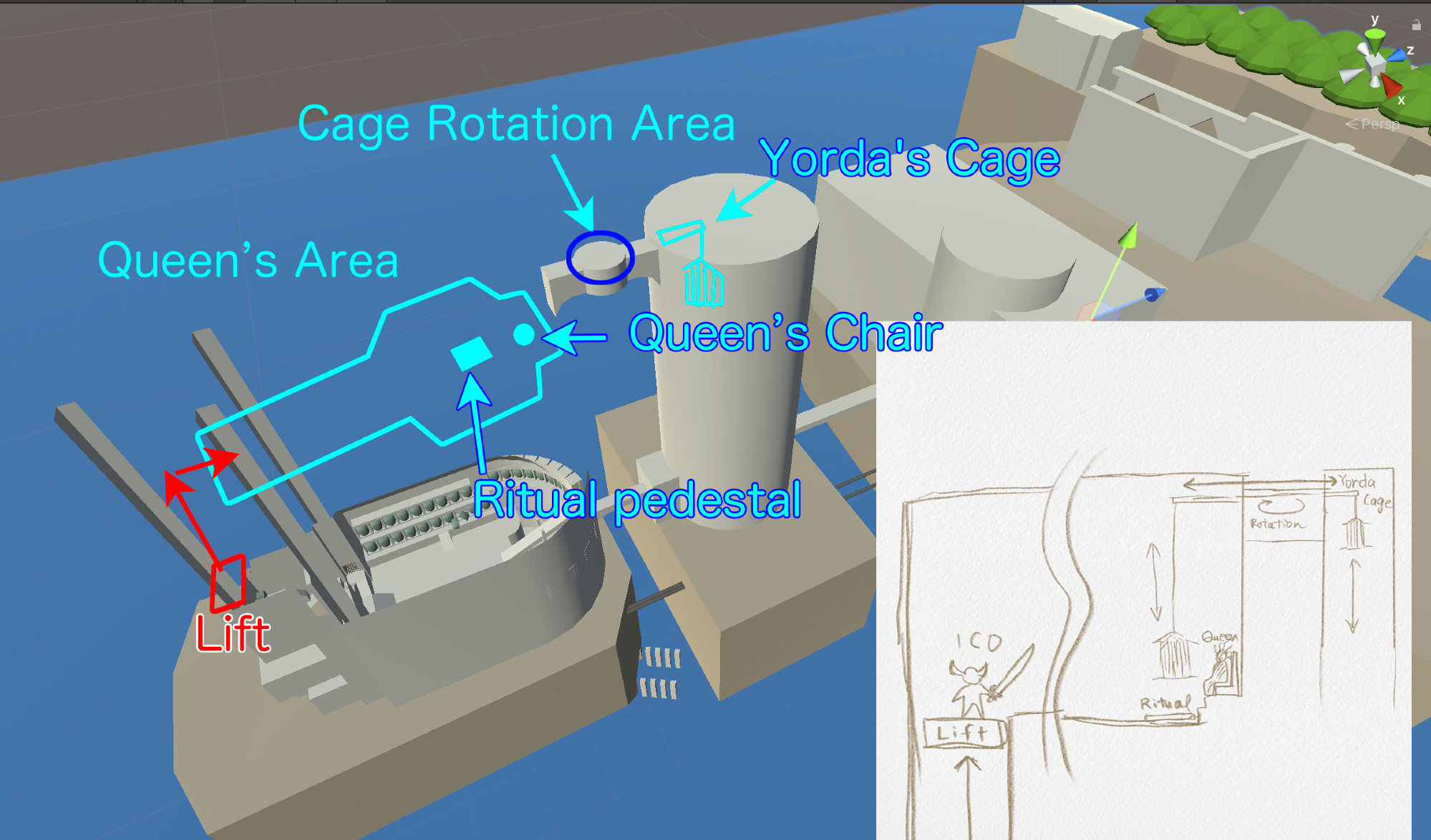 [Full Size]
[Full Size]Diagram shared by background artist Kazuhiro Numata. It reveals the means by which Yorda's cage was transported between Spiral Stairs and The Queen's Room, which neighbor each other.
The cage is also shown to rotate mid way across the unseen track connecting these spaces, so the door can face the throne.
 [Full Size]
[Full Size]'face' Texture
This name actually has an interesting origin that I've detaied elsewhere. (Trivia #18)


